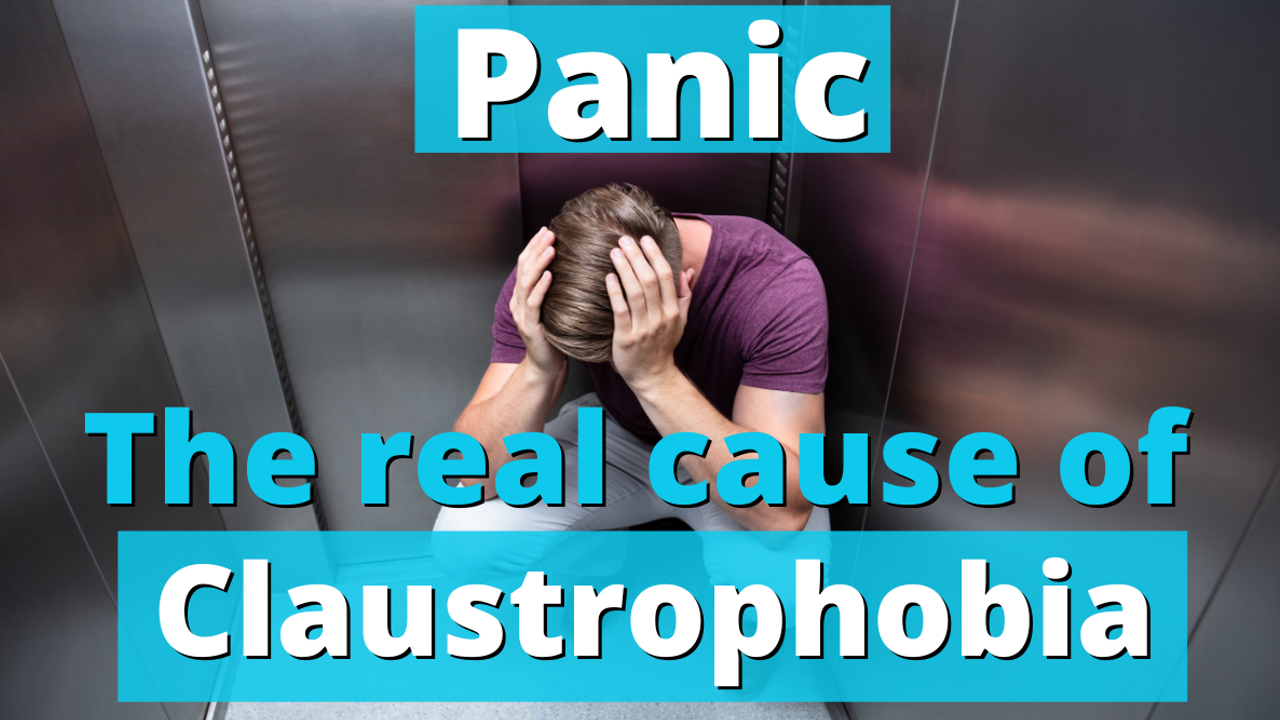The Cause of Claustrophobia

Welcome, my friends, to my latest blog post, where we’ll dive deep into the subject of Claustrophobia, a fear of confined or crowded spaces, and how it links to panic attacks.
Many people don't realize that claustrophobia is one of the more impairing and disruptive phobias due to crowds and tight spaces, like elevators and public transport, being a common occurrence in our modern day-to-day lives. In fact, about 2.2% of the total population experiences claustrophobia, and it’s more common among women than men.
The intensity of claustrophobia can vary from person to person, but for some, even the thought of being in a confined space can be enough to make you squirm. Some common triggers of claustrophobia include elevators, public transport, markets, and shopping malls, small cafes, airplanes, and rooms with sealed or closed windows, just to name a few.
Symptoms of Claustrophobia
Now, let's talk about the effects of claustrophobia.
Some people may only experience mild anxiety in these situations, but for others, it can cause an intense panic attack. Panic attacks can make you feel like your world is coming to an end. You could experience trembling, dizziness, chills or sweating, a sensation of choking, shortness of breath or rapid breathing, a tight chest or chest pains, hyperventilation, nausea, headaches, dry mouth, ringing ears, a feeling of disorientation, and a rapid heart rate.
Psychologically, you may experience a sense of dread or doom, fear that the door will shut when you’re in an enclosed space, a feeling like the walls are closing in on you, like you're going to faint or die, a sense of loss of control, and worry about panicking. People with claustrophobia may even go out of their way to avoid confined spaces, causing it to affect their daily lives.
What Causes Claustrophobia?
So, what causes Claustrophobia?
There are several possible causes, and it's different for everyone. Childhood trauma, such as being bullied or punished in closed spaces, can cause claustrophobia. Trauma as a teen or adult, such as being in an accident or trapped in an enclosed space, can also lead to claustrophobia. Genetic and environmental factors, such as a gene that creates a propensity for developing claustrophobia or learning from a parent's fear of enclosed spaces, may also play a role.
But what about those maintaining factors that cause your adrenaline to spike when thinking about or going into a confined space – why does that happen? Well, this comes down to beliefs. There are two types of beliefs that tend to cause a fear of confined spaces. The first is a belief that you'll probably die from suffocation or starvation if you get stuck in a confined space. The second is that being in a confined space will trigger a panic attack. In my experience, the latter is by far the most common.
What I see most of the time is that people have panic disorder, and that is the real cause of the claustrophobia. The confined space is acting as a trigger for a panic cycle (anxiety about anxiety). To learn more about anxiety and panic attacks click here.
It's important to note that claustrophobia is treatable, and there are several ways to overcome it. For example, Cognitive Behavioral Therapy (CBT) is an effective treatment option that can help you change what your brain thinks is going to happen in that confined space, thus reducing your fear. Gradual exposure therapy can also be effective, as it gradually exposes you to increasingly tight or crowded spaces, allowing you to become more comfortable in these situations over time as your brain learns that it is safe.
In conclusion, claustrophobia is a fear that affects many people around the world. It's important to understand its causes and how it links to panic attacks, as well as the physical and psychological effects that come with it. With proper treatment and support, it's possible to overcome this fear and lead a life free from the limitations that come with claustrophobia.
Virtual Treatment
If you want to start on virtual treatment from home, click here to watch our Claustrophobia Virtual Exposure Video
And if you'd like to explore the limits of what's possible with anxiety treatment, watch this:


